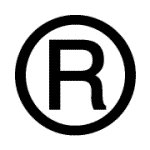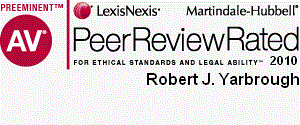Newsletter Issue 70 - December 2014
In this issue:
Photographing buildings and landmarks
Exporting patent infringement
Trademarking common words
Ask Dr. Copyright
Dear Doc:
What can you tell me about "Panoramafreiheit"?
Signed,
An American in Paris
Dear Mr. Mulligan:
Gesundheit! But seriously...you must be referring to the European
Union's 2001 Information Society Directive that states that photos
of architectural projects in public spaces (monuments, buildings,
etc.) may be taken and published free of copyright infringement
concerns (literally, freedom of panorama). That's like the United
States, where you're pretty much free to take photos of any landmark
or building and use those photos as you choose. That's the rule in
many European countries, too. But not, alas, in France, Belgium and
Italy! There, certain architectural works are protected, and unless
you're taking the photo for your own private, non-promotional use,
or on a "private website" (whatever THAT is!?!) you have to get
permission from the rights owner. You see, that EU directive was
optional for each country to adopt, or not.
Now we all know (or at least should know) that Gustav Eiffel built
his tower in 1889 and died in 1923. That means, Jerry, that there is
no protection anymore for what French artists lovingly called a
"ghastly dream", so snap away...but ONLY during daylight. As most
viewers of Rick Steves know, M. Eiffel's tower now sparkles with
thousands of lights each hour at night. In June, 1990 a French court
ruled that the lights were an "original visual creation" protected
by copyright. The Court of Cassation, France's highest court, upheld
the ruling in March 1992. The The Société d'Exploitation de la Tour
Eiffel (SETE) now considers any illumination of the tower to be
under copyright. So don't dare to photograph them, at least not if
you intend to publish the photos in France!
Want to know where it's OK to photograph? Ask the attorneys at LW&H.
They deal with copyright laws, model releases, and similar minutae,
and seem to really enjoy doing so.
Until next year,
The "Doc"
Query: What Do Shrimp de-veining, a PC Operating System, and DNA Amplification Have in Common?
 Answer:
In each of these situations, a copyist tried to avoid U.S. patent
infringement by exporting assembly of a patented U.S. invention to
another country.
Answer:
In each of these situations, a copyist tried to avoid U.S. patent
infringement by exporting assembly of a patented U.S. invention to
another country. In Deepsouth Packing Co. v. Laitram Corp., 406 U.S. 518 (1972), a copyist made parts of a patented shrimp de-veining machine in the United States, then exported the parts to its foreign buyers for assembly and use abroad. The Supreme Court found that the export of the unassembled parts of an infringing machine did not infringe the patent. The Court refused to extend liability for infringement of U.S. patents outside the U.S. without express direction from Congress.
Back in1972, Congress was still functional and responded to the Deepsouth case by enacting section 112(f) of the Patent statute, which states:
"Whoever without authority supplies or causes to be supplied in or from the United States all or a substantial portion of the components of a patented invention, where such components are uncombined in whole or in part, in such manner as to actively induce the combination of such components outside of the United States in a manner that would infringe the patent if such combination occurred within the United States, shall be liable as an infringer."
The ever-helpful Supreme Court revisited the issue in Microsoft v. AT&T Corp., 550 U.S. 437 (2007). In Microsoft, a copyist exported the master version of a patented PC operating system. The software was copied overseas and installed on foreign manufacturers' computers. The Supreme Court held that the operating system software was not a "component" that could trigger infringement liability under § 271(f). The Court also held that the software copies made by foreign manufacturers from the U.S. master copy were not "supplied" from the United States. As an aside, how the Court, in 2007, could have concluded that the operating system is not a component of a PC is beyond the understanding of this author, but I digress...
That brings us to the very recent case of Promega Corp. v. Life Tech. Corp. (Fed. Cir. 2014). Promega holds U.S. patents for kits for amplifying DNA. The kits allow forensic identification by law enforcement agencies and are also used in cancer treatment. Promega licensed its technology to Life Tech. Life Tech violated the terms of its license and Promega filed suit against Life Tech for infringement.
LifeTech manufactured one component of its kits in the United States, a polymerase crucial to the kit, which it shipped overseas to a LifeTech manufacturing facility in the United Kingdom. This offshore facility assembled and sold the kits worldwide. The question presented was whether manufacture of one part of the kit in the U.S. followed by assembly of the kit in the UK infringed the U.S. patent. The Federal Circuit concluded that one component of the patented invention could be 'a substantial portion' of its components to trigger liability. In this case, the polymerase component of the DNA test kit was an essential component and hence qualified as 'substantial.'
In short, after the Promega case, export of a crucial part of a patented invention so that the entire invention is assembled outside the U.S. is an infringement of a U.S. patent.
"HOW" in the world?
If you ever thought that trademark disputes could be arcane, well
here's proof. Dov Seidman, an international business consultant on
ethical business cultures, and Chobani, the yogurt maker, are duking
it out in court over trademark rights to the word "how". Maybe you
didn't realize that you could actually own trademark rights in
common words such as "how." So, how - excuse me - did this come
about?
Seidman, the author of "HOW: Why HOW We Do Anything Means Everything
" and the "How" column in Forbes Magazine contends that Chobani
stole the term "how" for use in its widely viewed yogurt ad
campaign, "How Matters." Of course, Chobani rejects the notion,
claiming that it never heard of Dov Seidman or his purported
"trademark".
The case raises at least two questions:
1. Can you actually have trademark rights in a common words such as
"how"?
2. If the test for trademark infringement is the likelihood of
confusion, will Dov Seidman's consulting customers confuse his
services with those of Chobani or, conversely, will Chobani's yogurt
customers be confused by Dov Seidman's use of the "how" term?
Yes, one can obtain trademark rights in a common term if use of the
common term is distinctive and not confusing to consumers.
Nonetheless, common terms are generally considered to be weak
trademarks and in many contexts may not embody trademark rights. On
the other hand, as we have discussed in this column, the best and
strongest trademarks are fanciful marks such as Kodak or Kleenex, to
name just two.
The second question posed by the "how" case, whether the parties'
use of the term would cause confusion in the marketplace, almost
seems ridiculous. Recall that a "trademark", by definition, "is a
word, phrase, symbol, and/or design that identifies and
distinguishes the source of the goods of one party from those of
others." Does Mr. Seidman rely believe that his high-end corporate
consultant customers will confuse his goods and services with those
of Chobani? If he wants to prevail, Mr. Seidman has an uphill climb.
HOW will he do it? We'll let you know.

